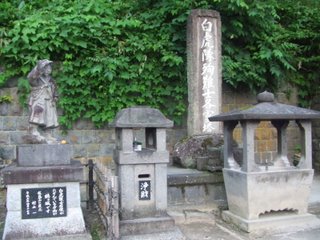
Upon reaching Aizu Wakamatsu in the neighbouring prefecture of Fukushima, we got tickets for the Classic Town Bus which would take us around the city for our tour.


First stop - Tenraku, one of Aizu's most famous confectionery shop selling rice cake products. We had a variety of konnyaku, omochi, and shingorou, chargrilled (?) and slathered with yummy sweet salty sauce.


Nx up : Tsurugajo Castle, built in 1591 and declared a national historical site in 1934. In 1868, during the Boshin Civil War, in which the imperial army fought the Tokugawa Shogunate regime, the castle was attacked by troops of the new government who were for the Meiji Restoration.


The rebuilt castle tower serves as a local history museum and observatory platform. Interesting bits include history of warrior culture, arts of the time, the Boshin Civil War and portraits of the last lord Matsudaira Katamori and the Byakkotai's. Tried on a regal looking kimono, but sadly don't look too much like a Japanese princess :p


We walked across the Roukabashi Takaishigaki collapsible bridge to the Fukushima Museum , which was opened in 1986. Pretty comprehensive with separate exhbition rooms depicting Folk Culture, Natural History, Archaelogy and History and Historical Art in Fukushima. With dimly light halls and state of the art display models, they even have museum staff stationed at each corner


We went to the Oyakuen Garden, I imagine it would be more beautiful at spring or autumn. In fact, most of the places in Japan look beautiful with each change in season. In summer, however, they just look "normal". Spring, you have the cherry blossoms dotting the place with pink and fluff. Golden brown and reddish tints symbolises autumn and come winter, the whole place is covered with a blanket of snow.



Our last stop was the
No comments:
Post a Comment